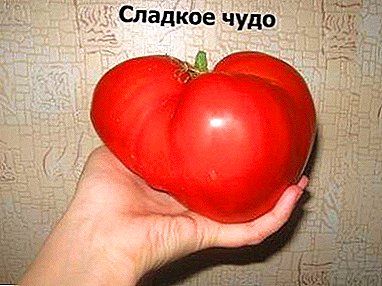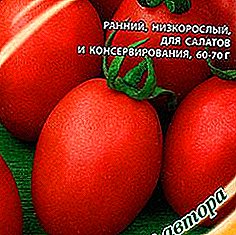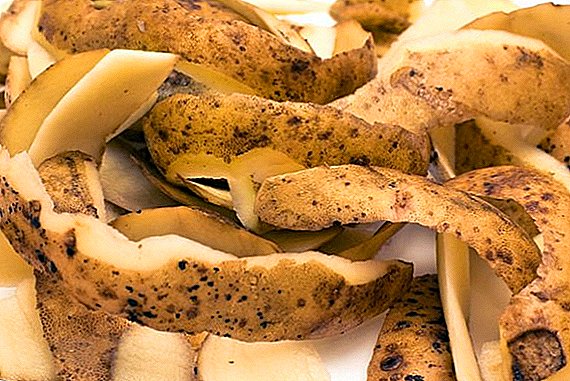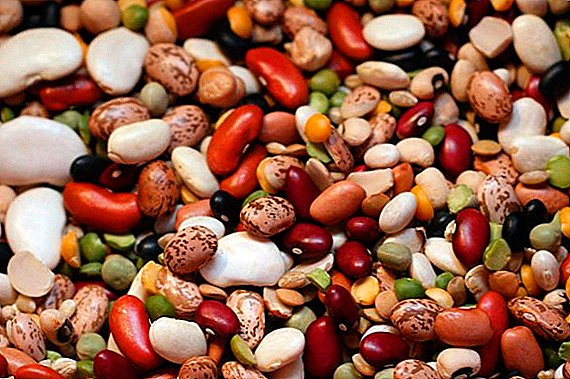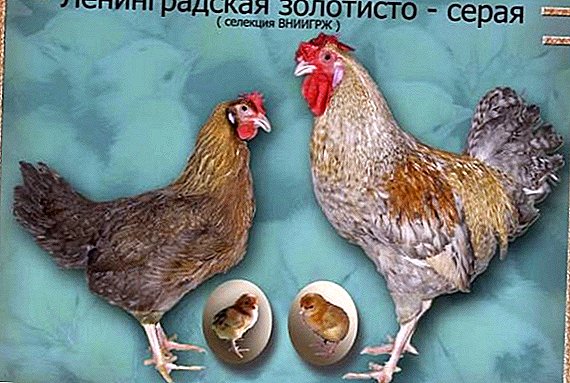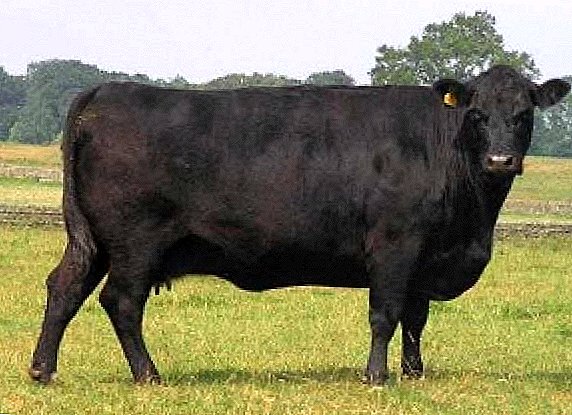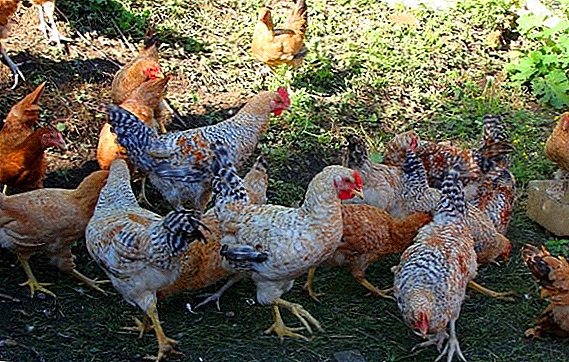 Cucumbers are among the most consumed vegetables in the world. They are used fresh or pickled. Many varieties and hybrids of this vegetable have been developed, making it very easy to grow cucumbers in most climatic zones. Today we will take a closer look at the April F1 cucumber variety, and the possibility of growing this hybrid at home.
Cucumbers are among the most consumed vegetables in the world. They are used fresh or pickled. Many varieties and hybrids of this vegetable have been developed, making it very easy to grow cucumbers in most climatic zones. Today we will take a closer look at the April F1 cucumber variety, and the possibility of growing this hybrid at home.
Variety description
"April F1" is a self-pollinating, cold-resistant, early and precocious hybrid. Used for planting in open ground, greenhouse and can be grown even indoors. A plant with limited lateral branching, medium-length, characterized by a female-type flowering.  Although the hybrid is parthenocarpic (it can bear fruit without pollination of flowers by bees), yet the maximum number of fruits can be collected after participating in the pollination of insects. "April F1" was bred in 1977, it is still considered one of the best and experienced gardeners often choose seeds of this hybrid for sowing.
Although the hybrid is parthenocarpic (it can bear fruit without pollination of flowers by bees), yet the maximum number of fruits can be collected after participating in the pollination of insects. "April F1" was bred in 1977, it is still considered one of the best and experienced gardeners often choose seeds of this hybrid for sowing.
The following varieties are also classified as hybrid cucumbers: Hector F1, Crispina F1, Envy for everyone f1, Springtime, Herman F1, Kibriya f1, Amur f1, Spino.
The advantages of a hybrid are:
- ability to self-pollination;
- the possibility of planting in early spring in the greenhouse, growing indoors;
- resistance to adverse weather conditions;
- harmonious fruiting;
- high rate of ripening green;
- disease resistance;
- lack of care in the process of growing;
- abundant fruiting, even in the absence of regular dressings.
Unlike other cucumber hybrids, the duration of fruiting "April" is only a month. During this time, all greenhouses ripen amicably. This hybrid is not suitable for obtaining stable yields throughout the summer, therefore, other varieties or hybrids are also sown at the site.
Did you know? In 1977, the April F1 was awarded at the German International Exhibition a gold medal, like a cucumber with the best taste.
Fruit characteristics and yield
The fruits of the "April" ripen early enough - from germination to ripening of the first Zelentsah passes no more than 50 days. Zelentsy are characterized by a saturated dark green color, not prone to yellowing, unlike other hybrids. They grow from 15 to 25 cm in length, have a cylindrical shape, they do not gum, the surface of the peel is covered with small white spikes.  The average weight of cucumbers is 250 g (not prone to growth). The main amount of the crop is obtained in the first 3 weeks of fruiting, at which time more than 15 kg of product can be harvested per square meter. m. For the entire period of fruiting, subject to the basic rules for growing, you can collect about 20-25 kg per 1 square. m
The average weight of cucumbers is 250 g (not prone to growth). The main amount of the crop is obtained in the first 3 weeks of fruiting, at which time more than 15 kg of product can be harvested per square meter. m. For the entire period of fruiting, subject to the basic rules for growing, you can collect about 20-25 kg per 1 square. m
Seed selection
The key to a bountiful harvest is the correct choice of planting material, so when you buy seeds you need to be as careful as possible.
It is recommended to buy seeds in specialized stores, avoiding markets and other dubious outlets. Pay attention to the integrity of the packaging, shelf life, the main characteristics of greenhouses and recommendations for sowing.
Do not buy planting material, in which the shelf life is nearing its end, as over time the seeds lose their ability to germinate. Ask the seller for a certificate of quality for the product being purchased or other documents that confirm that the hybrid is indeed displayed in a specialized institution in compliance with all regulations.
VIDEO: HOW TO CORRECTLY CHOOSE THE SEEDS OF CUCUMBERS If possible, examine the appearance of the seeds; they should be intact, firm, with a smooth surface, uniform color. Do not buy planting material with defects in appearance, the presence of points, dents, cracks, traces of mold.
Did you know? At home, you can check the seeds by immersing them in salted water (0.5 liters of water, 2 tsp. Of salt). If they do not float, the seeds have a high probability of germination. The sprouted seeds are thrown away, as they certainly will not germinate.
Soil and fertilizer
Cucumber "April F1" prefers to grow on loamy and sandy fertile soils. The soil has been prepared since autumn. On the site make rotted manure, superphosphates and fertilizers containing potassium. Plot with fertilizers should dig up. It is best to grow cucumbers on neutral soil, if it is acidic, then in the fall ashes, lime or dolomite flour are added to the soil. In spring, the soil is fertilized with top-dressings with a high nitrogen content, and before sowing they pour a little compost or humus into the hole.  Planting cucumbers annually in the same place is not allowed, it is recommended to regularly change the area for cultivation.
Planting cucumbers annually in the same place is not allowed, it is recommended to regularly change the area for cultivation.
Cucumbers are best sown in the area where the following crops were previously grown: peas, potatoes, beans, garlic, beets.
It is not recommended to sow cucumbers in the place where later varieties of cabbage and carrots used to grow.
Growing conditions
Cucumber is a light-loving plant, so it is necessary to plant it on the south side of the site. It is not recommended to sow cucumbers in a shaded area, in such a place the plants will grow slowly, bear fruit poorly, often get sick. The optimal temperature for the normal development of cucumbers is +22 ... +26 degrees during the day and + 17 ... +18 at night.
If the air temperature is below +14 or above +37 degrees - the growth of the plant stops, at a temperature of +12 degrees the roots no longer absorb moisture from the soil. Even minimal short frosts can completely destroy the plant. Sudden temperature drops in a room or greenhouse can be disastrous for cucumbers. In order for the air to warm up gradually, it is necessary to slightly open the windows and doors, but ventilate longer.
We recommend to learn about the features of growing cucumbers in the greenhouse: watering, dressing, garter.
Rapid plant growth and abundant formation of the ovary is achieved with high humidity (75-90%). Excessive humidity (more than 95%) may cause the development of askohitosis, and low humidity (below 50%) may cause the plant to wilt.  Airing greenhouses
Airing greenhouses
Did you know? The homeland of cucumbers is the foot of the Himalayas. There you can still meet thickets of wild representatives of this culture.
Growing from seed to seedlings at home
In order to grow strong plants that will provide a good harvest, it is necessary not only to choose the right seeds, but also to create the necessary conditions for their planting.
Seed preparation
Before sowing seeds, they are pre-processed in order to improve germination and speed up the germination process. Initially, it is necessary to carry out the treatment with growth stimulants, which increase germination and make the plants more resistant to various diseases. Such means include "Kornevin", "Heteroauxin", "Novosil", "Immunocytophit", "Zircon".  It is necessary to use drugs carefully, according to the instruction on packaging. In case of non-compliance with the concentration of the agent or the time of keeping the seeds in the solution, you can get the opposite effect in the form of restraining the growth of the plant or the death of the planting material.
It is necessary to use drugs carefully, according to the instruction on packaging. In case of non-compliance with the concentration of the agent or the time of keeping the seeds in the solution, you can get the opposite effect in the form of restraining the growth of the plant or the death of the planting material.
Check out the list of the most unusual varieties of cucumbers.
The next stage of treatment is disinfection of seeds before sowing. Previously, a popular tool for disinfection was potassium permanganate or copper sulfate. But with the development of science began to appear more effective tools on a biological basis. These include "Fitosporin-M", "Baktofit", "Albit." Each drug has its own characteristics of use, so it must be used strictly according to the instructions, while respecting the concentration and time of the seeds in the solution. 
Content and location
In closed soil, cucumbers can also be grown indoors: on a glassed-in balcony, heated loggia, or on a wide, well-lit window-sill. It is necessary to sow the seeds in mid-April in order to receive seedlings ready for transplantation in a month. Peat cups are chosen as containers, which can be purchased at any specialty store.
A sapling in this case, when transplanted into the open ground, does not need to be emptied of the container, it is planted with the peat cup. The peat cup is filled with a mixture of turf land, peat, vermiculite (or sawdust), and sand. Ingredients are mixed in equal amounts. 
Seed planting process
Seeds are sown in a prepared, slightly moistened substrate, 2-3 seeds in each peat cup. In the center of the glass in the substrate they dig a hole, 1.5 cm deep, place the seeds and sprinkle with soil. Capacity should be wrapped with film and put in a warm place. To remove the film is necessary after the appearance of the first shoots. If the seeds are of high quality and have been treated with a stimulant, the seedlings appear already on the fifth day after sowing.
Seedling care
Caring for cucumber seedlings, first of all, consists of observing the light regime. Seedlings require long-term illumination from 10 to 12 hours a day, therefore in the evening it is necessary to illuminate the seedlings with fluorescent lamps.
Familiarize yourself with the most unusual methods of growing cucumbers: in bags, plastic bottles, barrels, using hydroponics.
 It is also necessary to ensure regular watering using warm settled water. Watering the seedlings is necessary once every 2 days, and when the plants grow a little, they should be provided with daily watering. After watering, the soil must be regularly loosened in order to remove the crust and provide the roots with sufficient oxygen. Do this as carefully as possible, so as not to damage the roots.
It is also necessary to ensure regular watering using warm settled water. Watering the seedlings is necessary once every 2 days, and when the plants grow a little, they should be provided with daily watering. After watering, the soil must be regularly loosened in order to remove the crust and provide the roots with sufficient oxygen. Do this as carefully as possible, so as not to damage the roots.
2 weeks before planting seedlings in open ground, produce hardening seedlings. Seedlings carried out on the open balcony or on the street during the daytime every day. Initially, plants are kept on air for no more than 30 minutes, gradually increasing the amount of time up to 8 hours a day, bringing seedlings into the room only in the evening.
Did you know? There is a variety of cucumber with square fruits, which was bred in the UAE.

Transplanting seedlings to ground
Transplantation of seedlings in open ground occurs after 20-30 days after sowing the seeds. By this time, from 3 to 5 true leaves should form on each plant. If the seedlings are not transplanted into open ground in time, it will begin to turn yellow. Seedlings are buried in previously prepared pits, so that the peat pot is completely submerged in the soil. Between the plants it is necessary to observe a distance of 30 cm, the distance between the rows should be at least 50 cm.
When planting seedlings in the greenhouse, the optimal time interval - from April 15 to April 20, and when landing in open ground - from 2 to 10 June. 
Agrotechnics growing seeds in open ground
When growing cucumbers in open ground, you must adhere to certain rules of planting and care.
Outdoor conditions
Growing cucumbers in the open ground is necessary to create optimal conditions that will influence the growth of the plant, the quality of the fruit and the abundance of the crop. The site for planting cucumbers should be well lit, protected from the wind, with fertile sandy or loamy soil. Pay attention to the plants that grew in the territory of your choice earlier (a list of recommended and undesirable precursor plants is given above).
The process of planting seeds in the ground
Sow seeds in open ground at the end of May. The soil should warm up to +15 degrees during the day and +8 degrees at night. In the soil they dig grooves or pits, which are filled with a nutrient mixture of peat, humus, sand, and mineral fertilizers. Above the nutrient layer is watered with water and put the seeds of 3 pieces in the hole. It is necessary to sprinkle the seeds with soil in such a way that the soil layer does not exceed 2 cm. It is recommended to sprinkle the mulch in the form of peat or rotted manure and cover with a film before the first shoots.
VIDEO: LANDING OF CUCUMBERS IN AN OPEN GROUND
Watering
Cucumbers are very sensitive to soil moisture, since the root system of plants is located close to the soil surface.
It is useful to learn how to organize drip irrigation of plants at the dacha from scrap materials.
In this regard, the area after sowing seeds sprinkled with mulch, which is able to trap moisture and create optimal conditions for the development of cucumbers.
Water cucumbers, depending on weather conditions:
- if it rains regularly, then watering is not necessary;
- if there is little rain, water it once a day;
- if there are no rains - water once a day;
- if the air temperature exceeds +30 degrees and there are no rains, then the plants are watered 2 times a day.
Important! For irrigation it is necessary to use high-quality and clean water. The water temperature should not be below 23 degrees to prevent overcooling of the root system of cucumbers.
Soil loosening and weeding
To loosen the soil should be regularly after watering to avoid the formation of a crust on the soil surface and subsequent cracking of the soil, which will adversely affect the root system of plants. In the process of weeding the area from the weeds, the soil is loosening, so these two processes are often combined. The need for loosening the soil disappears when cucumbers bloom (at this time it is only necessary to remove weeds). Weeding should be done as carefully as possible so as not to touch the roots of cucumbers, which come close to the soil surface.
The need for loosening the soil disappears when cucumbers bloom (at this time it is only necessary to remove weeds). Weeding should be done as carefully as possible so as not to touch the roots of cucumbers, which come close to the soil surface.
Masking
Genetically laid weak branching "April" allows you to grow a good plant without forming a bush. Some experienced gardeners still resort to pasynkovanyu to increase the yield. If vertical supports or trellis are installed on the bed, then all unnecessary shoots with the exception of the main shoot are removed on the plant.
Such a formation will make the garden as accurate as possible, facilitate harvesting and caring for plants. If cultivation occurs in the usual way and cucumbers will grow in a horizontal plane, then the side shoots pinch to 4-6 first leaves. Also pinch the tip of the main shoot 2 cm to stimulate the growth of lateral shoots.  In order not to harm the young plant, pasynkovan carried out when the side shoots reached at least 6 cm in length. Young shoots are quite tender, so you can remove the excess without using tools. If the recommended period of pinching was missed, then to remove the already strong and hardened shoots will have to use sharp garden shears.
In order not to harm the young plant, pasynkovan carried out when the side shoots reached at least 6 cm in length. Young shoots are quite tender, so you can remove the excess without using tools. If the recommended period of pinching was missed, then to remove the already strong and hardened shoots will have to use sharp garden shears.
Learn more about the peeling of cucumbers in the greenhouse and in the open field.
Garter
To tie shoots of cucumbers is necessary in order to simplify the care of the plant, to ensure its maximum amount of sunlight. The placement of the shoots on the support stimulates the active simple side lashes, which can significantly increase the yield.
There are several ways to garter cucumbers:
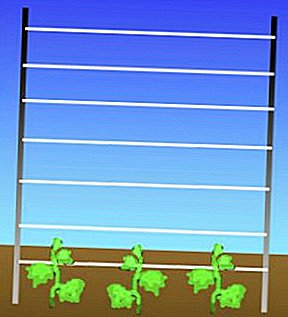 Horizontal. For the construction of using wooden or metal supports, which are installed on the edges of each row. Several rows of strong twine or rope (at different heights) are tied to supports. Already grown shoots are neatly tied to the bottom row of string with the help of soft cloth. The disadvantage of this method is the drooping of the shoots from the top point of support, if it is not high enough. Thus, the shoots will create a shadow of the rest of the plant, which will affect the yield.
Horizontal. For the construction of using wooden or metal supports, which are installed on the edges of each row. Several rows of strong twine or rope (at different heights) are tied to supports. Already grown shoots are neatly tied to the bottom row of string with the help of soft cloth. The disadvantage of this method is the drooping of the shoots from the top point of support, if it is not high enough. Thus, the shoots will create a shadow of the rest of the plant, which will affect the yield.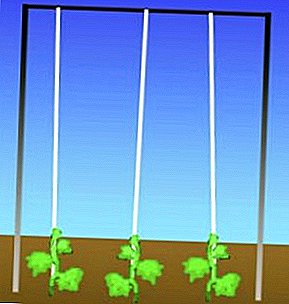 Vertical. For the construction, on the edges of the row, as in the horizontal method, supports are installed. Between the supports, at the very top, they stretch the rope, to which long ropes are tied at an equal distance so that they practically touch the ground. Grown shoots are tied to these ropes, creating a support for their growth upwards.
Vertical. For the construction, on the edges of the row, as in the horizontal method, supports are installed. Between the supports, at the very top, they stretch the rope, to which long ropes are tied at an equal distance so that they practically touch the ground. Grown shoots are tied to these ropes, creating a support for their growth upwards.- Mesh. For the construction of buying a special grid for spreading plants, which are attached to the supports installed along the edge of the rows. The shoots of cucumbers just sent to the grid and they themselves are woven into the cells. This method is the most expensive in finance, but is most popular with experienced gardeners because of the simplicity and speed of construction.

We recommend to learn about the benefits and rules of installing trellis nets for cucumbers.
Top dressing
After fertilizing the wells, the cucumbers should be left alone for some time. It is possible to fertilize cucumbers only 2 weeks after sowing. The first dressing should consist of ammonium nitrate (15 g per 1 sq. M). When there will be an active formation of shoots, make potash fertilizer (20 g of potassium nitrate and 25 g of superphosphate per 1 sq. M.).
The same dressing is carried out at the beginning of fruiting.Mineral feeding can be alternated with organic (mullein, chicken droppings). The prepared solution is infused for 3 days, then 1 part of this liquid is diluted with water (in a ratio of 1:10). Under each bush pour 1 liter of solution.
Important! Fertilizers should be applied no more than once every 10 days and 2 hours after watering the soil.
Pests, diseases and prevention
Cucumber "April" is resistant to most diseases, which often affect other varieties. These diseases include:
- olive blotch;
- cucumber mosaic virus;
- perinospora;
- root rot.
The only disease to which the hybrid is not resistant is white rot. The disease develops under the influence of fungi sclerotia, which are actively distributed in the overmoistened substrate with a sharp decrease in temperature.  White rot on cucumbers The reason for the emergence and rapid development of the disease is thickening of the planting and stagnation of air (in the greenhouse), therefore prevention of these factors is considered the main prevention. To combat the problem, it is necessary to stop watering and feeding the plant for 7 days, spray it with Topaz or Oxyhoma solution, according to the instructions on the package.
White rot on cucumbers The reason for the emergence and rapid development of the disease is thickening of the planting and stagnation of air (in the greenhouse), therefore prevention of these factors is considered the main prevention. To combat the problem, it is necessary to stop watering and feeding the plant for 7 days, spray it with Topaz or Oxyhoma solution, according to the instructions on the package.
Among the pests, the most common is aphid. The bush stops growing, leaves curl, there is no fruiting. In order to avoid plant infestation with aphids, the site is regularly cleaned of weeds. Insecticides ("Decis", "Arrivo") are used to fight with aphids. Preparations are diluted in water, according to the instructions and sprayed according to the recommendations on the package.
Harvesting and storage
You can harvest after 50 days after sowing. The first greenhouses appear already on the 40th day after sowing. Since the ripening of the fruit occurs quickly and at the same time, then visit the garden regularly (at least once every two days). Due to the fact that the "April" is not inclined to overgrow greens, they can wait for a long time when they are plucked, without changing the color and density of the skin. Harvesting is recommended in the early morning or late evening, when the greens are the most resilient.  Do not pinch, unscrew or pull cucumbers. They are collected, carefully cutting off with scissors or a knife, leaving the stalk on the shoot. Fruits are immediately placed in a cool place for storage, shifted into a plastic bag (not tying) and covered with a damp natural cloth. The longest cucumbers can be stored at a temperature not exceeding +8 degrees and air humidity of 85-95%.
Do not pinch, unscrew or pull cucumbers. They are collected, carefully cutting off with scissors or a knife, leaving the stalk on the shoot. Fruits are immediately placed in a cool place for storage, shifted into a plastic bag (not tying) and covered with a damp natural cloth. The longest cucumbers can be stored at a temperature not exceeding +8 degrees and air humidity of 85-95%.
Important! It is impossible to wash cucumbers before storage, as a special protective layer is formed on the surface of the peel during the ripening process, which prevents the rotting of the greens.The collected fruits, under the right conditions of storage, can lie down for up to 2 weeks, at room temperature the cucumbers become soft already on the 3rd day after harvest.
Possible problems and recommendations
Sometimes when growing cucumbers you may encounter the following problems:
- Falling ovary. Fruits, not having time to grow, turn yellow and showered, which may be due to low air temperature, very high humidity or a lack of dressings. Adjust these indicators and everything will be fine.
- Yellowing and drying of the leaves in the process of plant growth. The problem is associated with a lack of nitrogen, which can be corrected by feeding with any nitrogen-containing fertilizer.
- Withering fruits and shoots of the plant. This can be a sign of damage to the root system of the plant, which can no longer be cured - the plant will die.
- The absence of the ovary on many flowers. The reason - strong heat, excess nitrogen. Adjust the dressing mode to avoid this problem.


 Horizontal. For the construction of using wooden or metal supports, which are installed on the edges of each row. Several rows of strong twine or rope (at different heights) are tied to supports. Already grown shoots are neatly tied to the bottom row of string with the help of soft cloth. The disadvantage of this method is the drooping of the shoots from the top point of support, if it is not high enough. Thus, the shoots will create a shadow of the rest of the plant, which will affect the yield.
Horizontal. For the construction of using wooden or metal supports, which are installed on the edges of each row. Several rows of strong twine or rope (at different heights) are tied to supports. Already grown shoots are neatly tied to the bottom row of string with the help of soft cloth. The disadvantage of this method is the drooping of the shoots from the top point of support, if it is not high enough. Thus, the shoots will create a shadow of the rest of the plant, which will affect the yield. Vertical. For the construction, on the edges of the row, as in the horizontal method, supports are installed. Between the supports, at the very top, they stretch the rope, to which long ropes are tied at an equal distance so that they practically touch the ground. Grown shoots are tied to these ropes, creating a support for their growth upwards.
Vertical. For the construction, on the edges of the row, as in the horizontal method, supports are installed. Between the supports, at the very top, they stretch the rope, to which long ropes are tied at an equal distance so that they practically touch the ground. Grown shoots are tied to these ropes, creating a support for their growth upwards.